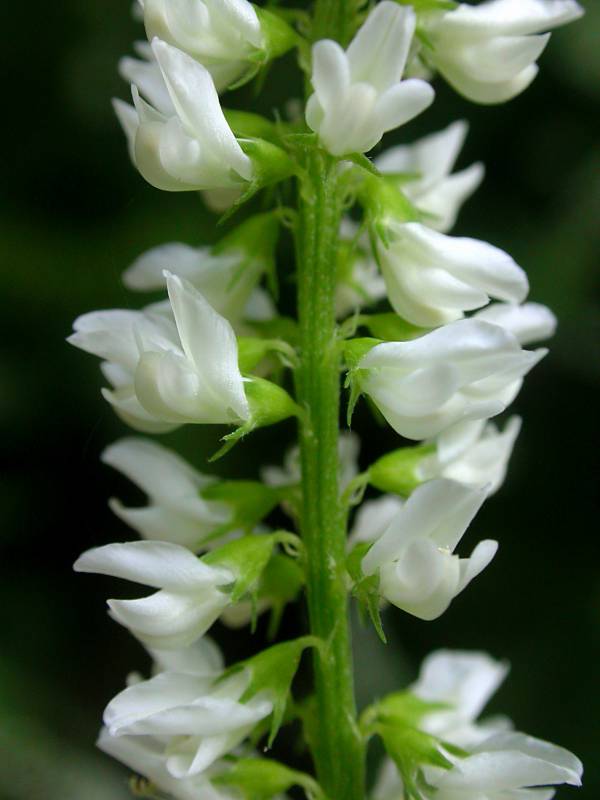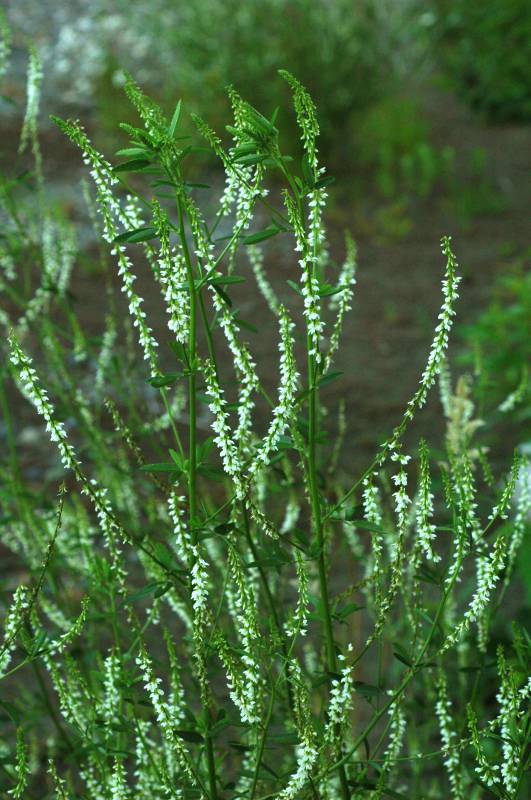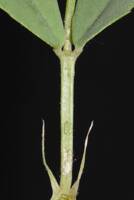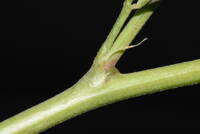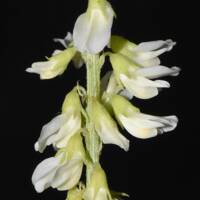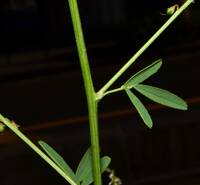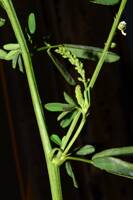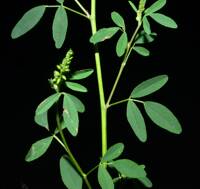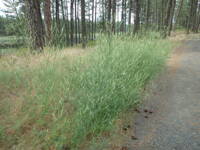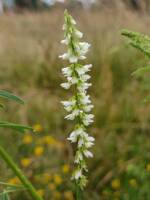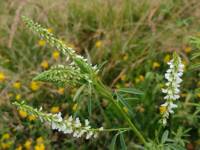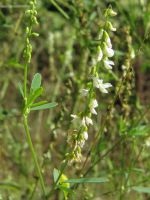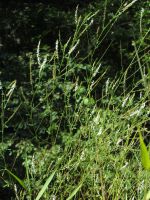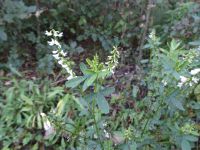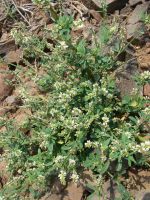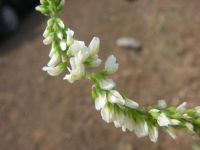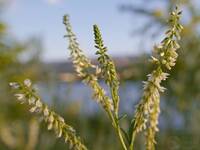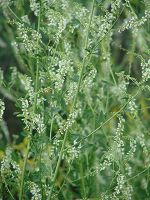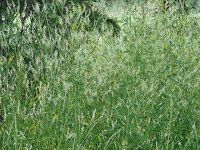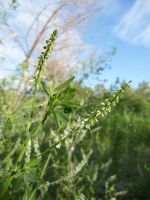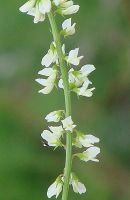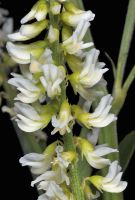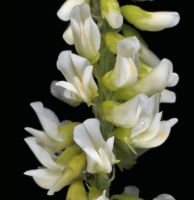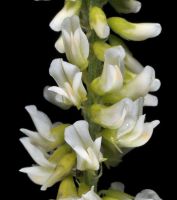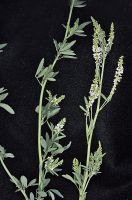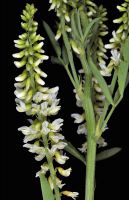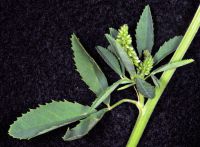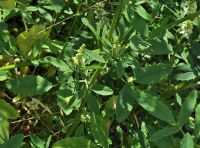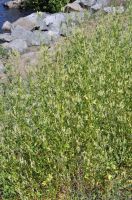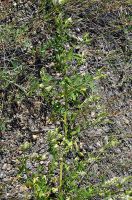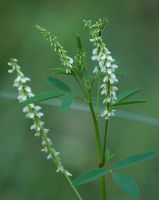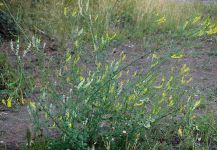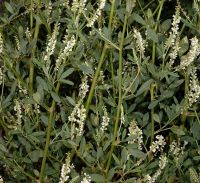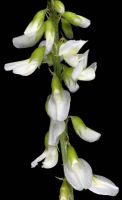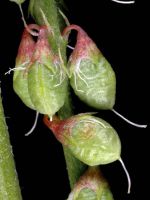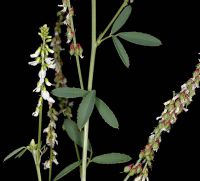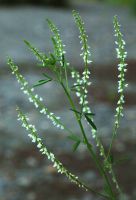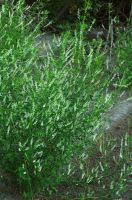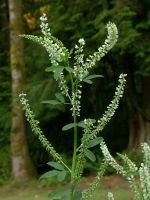Distribution: Widely distributed on both sides of the Cascades crest in Washington; widely distributed across most of North America.
Habitat: Roadsides, fields, wastelots, and other disturbed open areas at low to middle elevations.
Flowers: May-October
Origin: Introduced from Eurasia
Growth Duration: Annual, Biennial
Conservation Status: Not of concern
Pollination: Generalist
Sparsely puberulent to glabrous annual or biennial, the upright stems 0.5-3 m. tall, freely-branched above.
Leaves alternate, trifoliate, the leaflets oblong to narrowly elliptic-oblanceolate, 1.5-3 cm. long, serrate-dentate almost to the base; stipules linear, partially attached to the petiole.
Inflorescence of numerous, axillary, spike-like, bracteate racemes 4-12 cm. long; bractlets 2 mm. long; flowers pea-like, white, 2 mm. long; calyx narrowly bell-shaped, the 5 teeth broadly awl-shaped, equal.
Inflorescence of numerous, axillary, spike-like, bracteate racemes 4-12 cm. long; bractlets 2 mm. long; flowers pea-like, white, 2 mm. long; calyx narrowly bell-shaped, the 5 teeth broadly awl-shaped, equal.
Publication: Vorles. Churpfälz. Phys.-Öcon. Ges. 2: 382. 1787.
Melilotus albus Medik. var. annuus H.S. Coe
PNW Herbaria: Specimen records of Melilotus albus in the Consortium of Pacific Northwest Herbaria database
WA Flora Checklist: Melilotus albus checklist entry
OregonFlora: Melilotus albus information
E-Flora BC: Melilotus albus atlas page
CalPhotos: Melilotus albus photos

